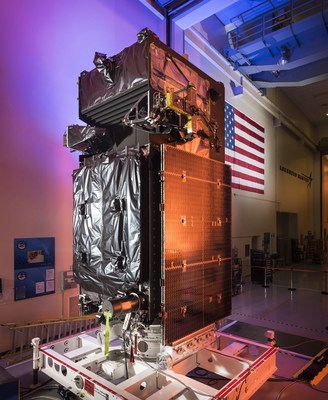The U.S. Air Force and Lockheed Martin (NYSE: LMT) will launch the next Space Based Infrared System (SBIRS) satellite on Jan. 19 aboard a United Launch Alliance Atlas V rocket. The launch window is between 7:46 and 8:26 p.m. EST.
SBIRS GEO Flight 3 was designed and built at Lockheed Martin in Sunnyvale, California, as the next in a series of Air Force satellites that provide multi-mission surveillance in the areas of missile warning, missile defense, technical intelligence and battlespace awareness.

The data provided by SBIRS can also be applied to a number of qualified government and civilian applications, including first response for natural disasters and firefighting.
Watch Live: A live launch broadcast will begin at 7:26 p.m. EST and will be viewable at www.ulalaunch.com.
“At Lockheed Martin, we understand the Air Force’s important mission to protect our nation and allies around the world, as well as the critical role that SBIRS plays in their continued ability to respond to evolving threats,” said David Sheridan, vice president of Lockheed Martin’s Overhead Persistent Infrared systems mission area.
“With the launch of GEO Flight 3, we are proud to further enhance SBIRS infrared surveillance capabilities, and we look forward to working with our customer and industry teammates toward 100 percent mission success.”
Once it reaches Geosynchronous Earth Orbit—around 22,000 miles above the Earth—GEO Flight 3 will use powerful sensors and cameras to detect and track infrared events, such as missile launches or other heat-causing events.
While some satellites can only “see” what is directly below them, the SBIRS constellation has a view of the whole world, scanning for wide-area surveillance and staring at spots of interest.
(Learn More about Space Based Infrared System (SBIRS), courtesy of Lockheed Martin, Matthew Travis and YouTube)
With each satellite build, Lockheed Martin has continued to streamline its manufacturing process and increase efficiencies, while also introducing innovations that will keep SBIRS relevant long into the future.
The next satellite, GEO Flight 4, will undergo final assembly, integration and test prior to its planned 2017 launch.
SBIRS GEO-5 and GEO-6, which are currently in production, incorporate a new common spacecraft bus, Lockheed Martin’s modernized A2100, which dramatically reduces costs and cycle times while increasing the potential to incorporate future advanced sensor suites.
(Ever wonder what it takes to get satellites in space? Our team shares some insights about this critical, multi-mission program and what it takes to get SBIRS on orbit. Courtesy of Lockheed Martin and YouTube)
The SBIRS development team is led by the Remote Sensing Systems Directorate at the U.S. Air Force Space and Missile Systems Center, Los Angeles Air Force Base, California.
Lockheed Martin Space Systems, Sunnyvale, California, is the SBIRS prime contractor, with Northrop Grumman Aerospace Systems, Azusa, California, as the payload integrator.
The 460th Space Wing, Buckley Air Force Base, Colorado, operates the SBIRS system.
Headquartered in Bethesda, Maryland, Lockheed Martin is a global security and aerospace company that employs approximately 98,000 people worldwide and is principally engaged in the research, design, development, manufacture, integration and sustainment of advanced technology systems, products and services.

















